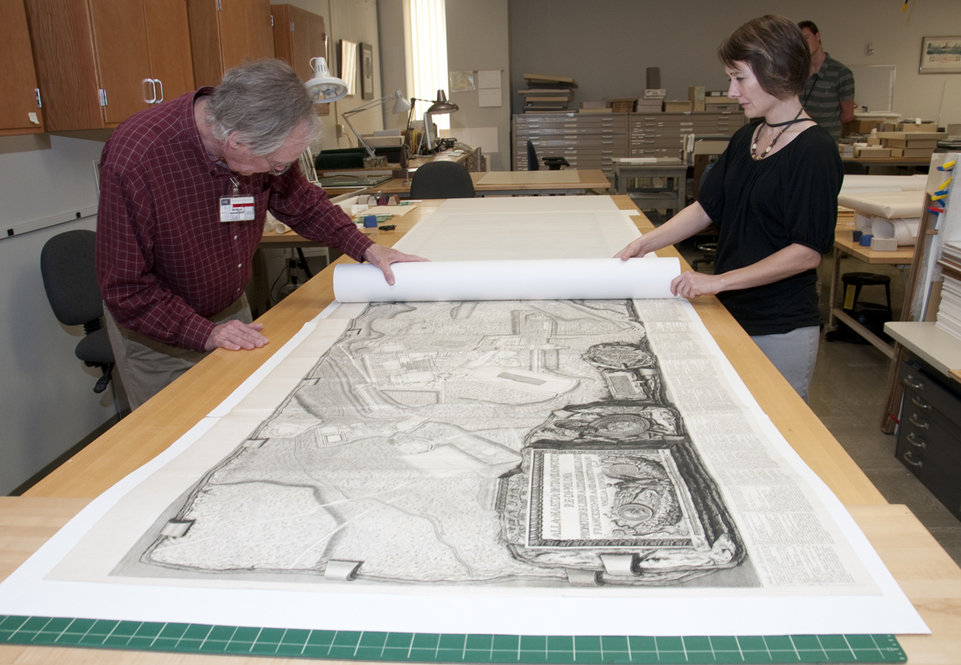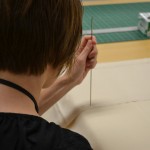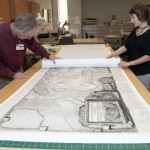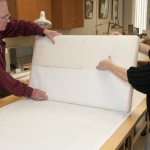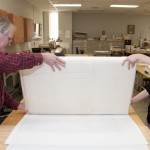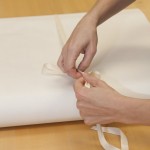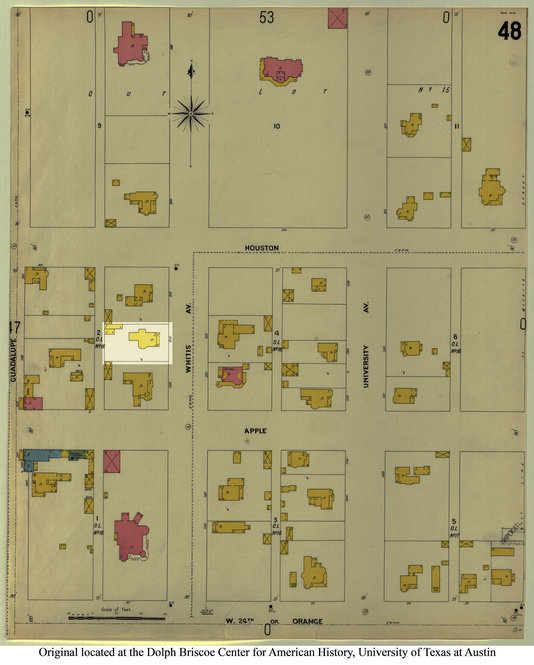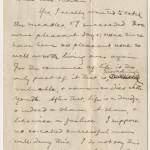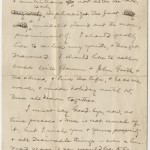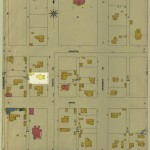The atria on the first floor of the Ransom Center are surrounded by windows featuring etched reproductions of images from the collections. The windows offer visitors a hint of the cultural treasures to be discovered inside. From the Outside In is a series that highlights some of these images and their creators.
This image captures the dramatic scale of the Crystal Palace, built to house the Great Exhibition of 1851, the first international world’s fair. It was the largest glass building at the time, covering 990,000 square feet of Hyde Park in the middle of London, and so tall that it could enclose whole elm trees. The photograph was taken at the end of the exhibition, before the palace was dismantled and rebuilt in the suburb Sydenham, south of the city, as an even grander permanent exhibition space.
The Great Exhibition had been envisioned by Prince Albert to show off the wonders of British technology, and the Crystal Palace itself was one of the greatest wonders on show. Designing a building to house the more than 14,000 exhibits of the Exhibition had been a long and difficult process. Until the planning committee accepted Joseph Paxton’s winning design in July 1850, they had rejected every submitted proposal as too expensive to build, in addition to a design that they themselves had created and that had been ridiculed by the press. Paxton was one of the most respected gardeners in the United Kingdom and had ample experience creating large greenhouses. His Crystal Palace design took advantage of a newly invented process for mass-producing sheet glass. Held together by cast iron supports, 900,000 square feet of glass were used to create a modular structure at a cost less than half of many of the other designs. The modular design also allowed Paxton to make changes as needed; the transept in this picture was specially created to enclose a line of elms that otherwise would have been cut down. The final structure was 72 feet wide, more than 1,800 feet (six football fields) long, and up to 100 feet high, but Paxton was able to construct it on budget in only five months, in time for the opening of the exhibition on May 1, 1851.
Among its other attractions, the exhibition included one of the first large-scale displays of photographs anywhere in the world: over 700 photographs from six different countries. Photographer Benjamin Brecknell Turner was likely one of the people who saw these photos. In 1852, he photographed the Crystal Palace with a large-field camera, creating some of the most dramatic architectural compositions of the Victorian Age. Turner had gained a license to use William Fox Talbot’s calotype technique in 1849, and he preferred to use this method for all of his large-scale 30 x 40 centimeter paper negatives from then on. With his new camera, he was able to capture the Crystal Palace in striking detail, and he became one of the pioneers of photography’s early era.
This image forms a part of the Ransom Center’s Gernsheim collection, which documents the history of photography from the First Photograph (ca. 1826) until the 1960s.
Ransom Center volunteer Emilio Englade wrote this post.
Image: From the original calotype paper negative of “Transept of the Crystal Palace,” Benjamin Brecknell Turner, March 1852.

